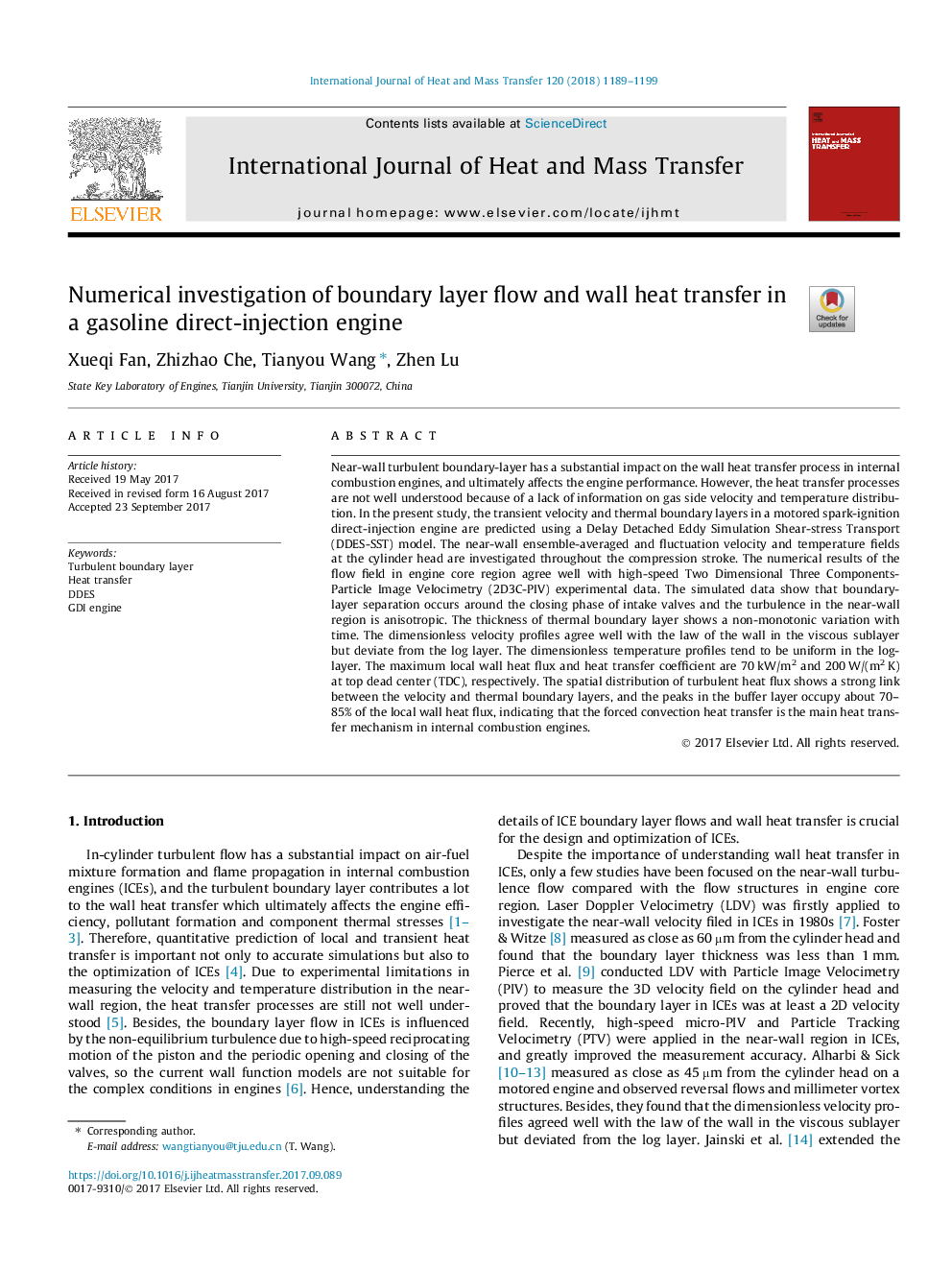| کد مقاله | کد نشریه | سال انتشار | مقاله انگلیسی | نسخه تمام متن |
|---|---|---|---|---|
| 7054746 | 1458020 | 2018 | 11 صفحه PDF | دانلود رایگان |
عنوان انگلیسی مقاله ISI
Numerical investigation of boundary layer flow and wall heat transfer in a gasoline direct-injection engine
ترجمه فارسی عنوان
بررسی عددی جریان لایه مرزی و انتقال حرارت دیواره در موتور تزریق مستقیم بنزین
دانلود مقاله + سفارش ترجمه
دانلود مقاله ISI انگلیسی
رایگان برای ایرانیان
کلمات کلیدی
موضوعات مرتبط
مهندسی و علوم پایه
مهندسی شیمی
جریان سیال و فرایندهای انتقال
چکیده انگلیسی
Near-wall turbulent boundary-layer has a substantial impact on the wall heat transfer process in internal combustion engines, and ultimately affects the engine performance. However, the heat transfer processes are not well understood because of a lack of information on gas side velocity and temperature distribution. In the present study, the transient velocity and thermal boundary layers in a motored spark-ignition direct-injection engine are predicted using a Delay Detached Eddy Simulation Shear-stress Transport (DDES-SST) model. The near-wall ensemble-averaged and fluctuation velocity and temperature fields at the cylinder head are investigated throughout the compression stroke. The numerical results of the flow field in engine core region agree well with high-speed Two Dimensional Three Components-Particle Image Velocimetry (2D3C-PIV) experimental data. The simulated data show that boundary-layer separation occurs around the closing phase of intake valves and the turbulence in the near-wall region is anisotropic. The thickness of thermal boundary layer shows a non-monotonic variation with time. The dimensionless velocity profiles agree well with the law of the wall in the viscous sublayer but deviate from the log layer. The dimensionless temperature profiles tend to be uniform in the log-layer. The maximum local wall heat flux and heat transfer coefficient are 70Â kW/m2 and 200Â W/(m2Â K) at top dead center (TDC), respectively. The spatial distribution of turbulent heat flux shows a strong link between the velocity and thermal boundary layers, and the peaks in the buffer layer occupy about 70-85% of the local wall heat flux, indicating that the forced convection heat transfer is the main heat transfer mechanism in internal combustion engines.
ناشر
Database: Elsevier - ScienceDirect (ساینس دایرکت)
Journal: International Journal of Heat and Mass Transfer - Volume 120, May 2018, Pages 1189-1199
Journal: International Journal of Heat and Mass Transfer - Volume 120, May 2018, Pages 1189-1199
نویسندگان
Xueqi Fan, Zhizhao Che, Tianyou Wang, Zhen Lu,
